List of African dinosaurs facts for kids
Africa is a huge continent with a long history, and it was once home to many amazing dinosaurs! This article lists the non-flying dinosaurs whose bones have been found across Africa.
Africa has a lot of dinosaur fossils, but sometimes the record is incomplete. Still, we have found many dinosaurs from the Triassic and Early Jurassic periods. Some of these early African dinosaurs include Megapnosaurus, Dracovenator, Melanorosaurus, Massospondylus, Euskelosaurus, Heterodontosaurus, Abrictosaurus, and Lesothosaurus.
During the Middle Jurassic period, giant plant-eating dinosaurs called sauropods like Atlasaurus, Chebsaurus, Jobaria, and Spinophorosaurus lived here. A fierce meat-eater called Afrovenator also roamed Africa then.
The Late Jurassic period is well-known in Africa, especially thanks to the amazing Tendaguru Formation in Tanzania. Many dinosaurs have been found there, such as Veterupristisaurus, Ostafrikasaurus, Elaphrosaurus, Giraffatitan, Dicraeosaurus, Janenschia, Tornieria, Tendaguria, Kentrosaurus, and Dysalotosaurus. These dinosaurs seem very similar to those found in the Morrison Formation in the United States and the Lourinha Formation in Portugal. This tells us important things about how dinosaurs spread across the ancient world.
The Early Cretaceous period in Africa is mostly known from the northern part, especially Niger. Dinosaurs like Suchomimus, Elrhazosaurus, Rebbachisaurus, Nigersaurus, Kryptops, Nqwebasaurus, and Paranthodon lived during this time. The Early Cretaceous was a big moment for African dinosaurs. This was when Africa finally broke away from South America, forming the South Atlantic Ocean. This separation meant that African dinosaurs started to become unique to the continent because they were isolated.
The Late Cretaceous period in Africa is also mainly known from North Africa. During the early part of this period, North Africa was home to many different dinosaurs. These included the huge Spinosaurus, Carcharodontosaurus, Rugops, Bahariasaurus, Deltadromeus, Paralititan, Aegyptosaurus, and Ouranosaurus.
Contents
List of African Dinosaurs
This table lists many of the dinosaur types (genera) found in Africa.
| Name | Year | Formation | Location | Cool Facts | Images |
|---|---|---|---|---|---|
| Aardonyx | 2010 | Elliot Formation (Early Jurassic, Sinemurian) | This dinosaur could walk on two legs, but also on all four. |  |
|
| Abrictosaurus | 1975 | Elliot Formation (Early Jurassic, Hettangian to Sinemurian) | We know it from two skulls. One has tusks, which might mean males and females looked different. | 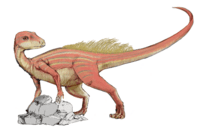 |
|
| Adratiklit | 2020 | El Mers Group (Middle Jurassic, Bathonian) | This is the oldest known stegosaur. It's related to later European stegosaurs. |  |
|
| Aegyptosaurus | 1932 | Bahariya Formation, Continental intercalaire?, Farak Formation? (Late Cretaceous, Cenomanian) | Sadly, its main fossil was destroyed in World War II. | 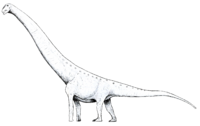 |
|
| Afromimus | 2017 | Elrhaz Formation (Early Cretaceous, Aptian to Albian) | It was first thought to be an African ornithomimosaur, but later studies suggested it might be a noasaurid. |  |
|
| Afrovenator | 1994 | Tiourarén Formation (Middle Jurassic to Late Jurassic, Bathonian to Oxfordian) | Scientists first thought it lived in the Early Cretaceous. |  |
|
| Ajnabia | 2021 | Ouled Abdoun Basin (Late Cretaceous, Maastrichtian) | This was the first hadrosaur (duck-billed dinosaur) found in Africa. It's related to European lambeosaurines. |  |
|
| Algoasaurus | 1904 | Kirkwood Formation (Early Cretaceous, Berriasian to Valanginian) | Today, we only have a few bones. More might have been used to make bricks before they could be studied! |  |
|
| Angolatitan | 2011 | Itombe Formation (Late Cretaceous, Coniacian) | This was the first non-flying dinosaur found in Angola. | 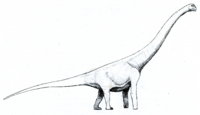 |
|
| Antetonitrus | 2003 | Elliot Formation (Early Jurassic, Hettangian) | Its limbs were built to carry weight, but its front limbs could still grasp things. | 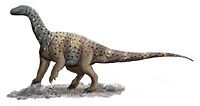 |
|
| Arcusaurus | 2011 | Elliot Formation (Early Jurassic, Hettangian to Pliensbachian) | It has features of both early and more advanced sauropodomorphs. |  |
|
| Atlasaurus | 1999 | Guettioua Formation (Middle Jurassic, Bathonian to Callovian) | This sauropod had unusually long legs for its kind. |  |
|
| Australodocus | 2007 | Tendaguru Formation (Late Jurassic, Kimmeridgian to Tithonian) | It might be an early member of the euhelopodid group. |  |
|
| Bahariasaurus | 1934 | Bahariya Formation, Farak Formation? (Late Cretaceous, Cenomanian to Turonian) | It was a very large dinosaur, but we only have a few bones of it. | ||
| Berberosaurus | 2007 | Azilal Formation (Early Jurassic, Toarcian) | This is one of the oldest ceratosaurs we know about. |  |
|
| Blikanasaurus | 1985 | Elliot Formation (Late Triassic, Norian) | It was a very strong dinosaur that lived alongside other sauropodomorphs. | 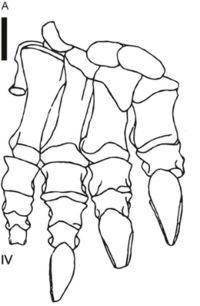 |
|
| Carcharodontosaurus | 1931 | Bahariya Formation, Chenini Formation?, Continental intercalaire, Echkar Formation, Elrhaz Formation?, Kem Kem Group, Wadi Milk Formation? (Late Cretaceous, Cenomanian) | This was one of the longest meat-eating dinosaurs. Two types (species) are known. |  |
|
| Chebsaurus | 2005 | Aïssa Formation (Middle Jurassic, Callovian) | We know it from two young dinosaur specimens. | 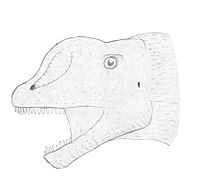 |
|
| Chenanisaurus | 2017 | Ouled Abdoun Basin (Late Cretaceous, Maastrichtian) | It might be a type of abelisaurid dinosaur found only in Africa. |  |
|
| Cristatusaurus | 1998 | Elrhaz Formation (Early Cretaceous, Aptian to Albian) | Many scientists think it's the same as Suchomimus, but some believe it's a separate type. |  |
|
| Deltadromeus | 1996 | Kem Kem Group (Late Cretaceous, Cenomanian) | Scientists have had different ideas about where it fits in the dinosaur family tree. |  |
|
| Dicraeosaurus | 1914 | Tendaguru Formation (Late Jurassic, Kimmeridgian to Tithonian) | This sauropod had a short neck and ate plants close to the ground. Two types are known. |  |
|
| Dracovenator | 2005 | Elliot Formation (Early Jurassic, Hettangian) | We only have skull pieces, but they show it was related to Dilophosaurus. |  |
|
| Dysalotosaurus | 1919 | Tendaguru Formation (Late Jurassic, Kimmeridgian) | Many fossils have been found, teaching us about its life, what it ate, and even diseases it had. |  |
|
| Elaphrosaurus | 1920 | Tendaguru Formation (Late Jurassic, Kimmeridgian) | It had a surprisingly shallow chest for a meat-eating dinosaur of its size. |  |
|
| Elrhazosaurus | 2009 | Elrhaz Formation (Early Cretaceous, Aptian) | It is very closely related to Valdosaurus. |  |
|
| Eocarcharia | 2008 | Elrhaz Formation (Early Cretaceous, Albian) | Its forehead bone was thick, giving it a fierce look. | 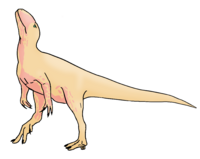 |
|
| Eocursor | 2007 | Elliot Formation (Early Jurassic, Hettangian to Pliensbachian) | This is one of the most complete early ornithischian dinosaurs known. | 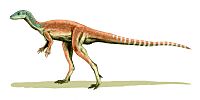 |
|
| Eucnemesaurus | 1920 | Elliot Formation (Late Triassic, Carnian to Norian) | Some fossils of this dinosaur were first thought to be from a giant herrerasaurid. | 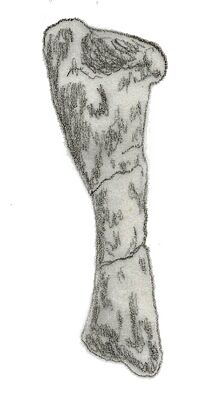 |
|
| Euskelosaurus | 1866 | Elliot Formation (Late Triassic, Norian to Rhaetian) | It was first thought to have bow-legs. | 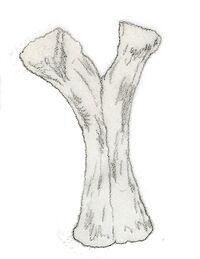 |
|
| Geranosaurus | 1911 | Clarens Formation (Early Jurassic, Pliensbachian to Toarcian) | We don't know much about it, but it might be a heterodontosaurid. |  |
|
| Giraffatitan | 1988 | Tendaguru Formation (Late Jurassic, Kimmeridgian to Tithonian) | It's often linked to Brachiosaurus, but there are several differences between them. |  |
|
| Gryponyx | 1911 | Elliot Formation (Early Jurassic, Hettangian to Sinemurian) | It's usually seen as the same as Massospondylus, but one study found it to be different. |  |
|
| Heterodontosaurus | 1962 | Clarens Formation, Elliot Formation (Early Jurassic, Hettangian to Pliensbachian) | It had three kinds of teeth, including tusks, and a hard beak. | 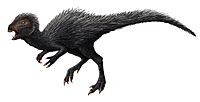 |
|
| Igai | 2023 | Quseir Formation (Late Cretaceous, Campanian to Maastrichtian) | It's more closely related to European titanosaurs than to those from southern Africa. |  |
|
| Ignavusaurus | 2010 | Elliot Formation (Early Jurassic, Hettangian) | We only know it from one mostly complete young skeleton with a squashed skull. |  |
|
| Inosaurus | 1960 | Bahariya Formation?, Eckhar Formation?, Tegama Group? (Early Cretaceous, Albian)? | Very little is known about this dinosaur. | ||
| Iyuku | 2022 | Kirkwood Formation (Early Cretaceous, Valanginian) | It's special because it's known from a group of mostly baby and young fossils. | ||
| Janenschia | 1991 | Tendaguru Formation (Late Jurassic, Oxfordian to Tithonian) | It might be a close relative of Bellusaurus, Haestasaurus, and Tehuelchesaurus. |  |
|
| Jobaria | 1999 | Tiourarén Formation (Middle Jurassic to Late Jurassic, Bathonian to Oxfordian) | We have an almost complete skeleton of this dinosaur. | 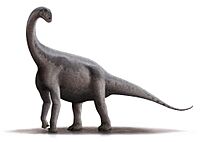 |
|
| Kangnasaurus | 1915 | Kalahari Deposits Formation (Early Cretaceous, Aptian) | It has been compared to dryosaurids, but some studies suggest it belongs to Elasmaria. | 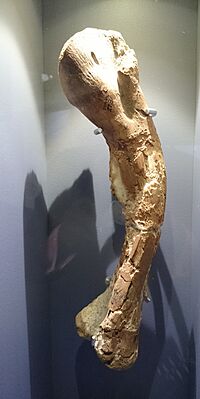 |
|
| Karongasaurus | 2005 | Dinosaur Beds (Early Cretaceous, Aptian) | It was described from only a jawbone and separate teeth. |  |
|
| Kentrosaurus | 1915 | Tendaguru Formation (Late Jurassic, Kimmeridgian to Tithonian) | It had two rows of plates that turned into spikes near its tail, and a long spike on each shoulder. |  |
|
| Kholumolumo | 2020 | Elliot Formation (Late Triassic, Norian) | Before its official name, it was called "trash heap lizard" because its main fossil was found near a trash heap. | 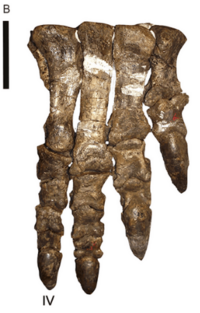 |
|
| Kryptops | 2008 | Elrhaz Formation (Early Cretaceous, Aptian to Albian) | Some bones thought to be from this abelisaurid might actually be from a carcharodontosaurid. |  |
|
| Ledumahadi | 2018 | Elliot Formation (Early Jurassic, Hettangian to Sinemurian) | This was one of the largest Triassic dinosaurs, weighing about 12 tons! |  |
|
| Lesothosaurus | 1978 | Clarens Formation, Elliot Formation (Early Jurassic, Hettangian to Pliensbachian) | It might have been an omnivore, eating meat when plants were scarce. |  |
|
| Lurdusaurus | 1999 | Elrhaz Formation (Early Cretaceous, Aptian to Albian) | Its body shape suggests it might have been a plant-eater that lived partly in water, like a hippopotamus. | 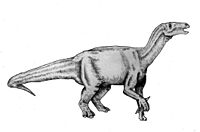 |
|
| Lycorhinus | 1924 | Elliot Formation (Early Jurassic, Hettangian to Sinemurian) | It was first mistakenly identified as a type of mammal-like reptile. | 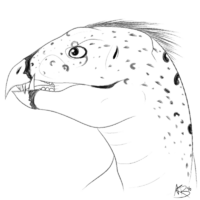 |
|
| Malawisaurus | 1993 | Dinosaur Beds (Early Cretaceous, Barremian to Aptian) | Many fossils have been found, including skull bones and armor plates, but they might not all be from the same type of dinosaur. | 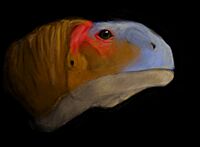 |
|
| Mansourasaurus | 2018 | Quseir Formation (Late Cretaceous, Campanian) | This is one of the few land animals known from the Late Cretaceous of northern Africa. |  |
|
| Massospondylus | 1854 | Bushveld Sandstone, Clarens Formation, Elliot Formation, Forest Sandstone (Early Jurassic, Hettangian to Pliensbachian) | Many fossils of this dinosaur have been found. Some were once thought to be different types. |  |
|
| Mbiresaurus | 2022 | Pebbly Arkose Formation (Late Triassic, Carnian) | This is one of the oldest dinosaurs from Africa. Its discovery shows that early dinosaurs lived in high-latitude areas. | ||
| Melanorosaurus | 1924 | Elliot Formation (Late Triassic, Norian) | It was a strong, four-legged plant-eater. Some fossils might not belong to this type. |  |
|
| Meroktenos | 2016 | Elliot Formation (Late Triassic, Norian to Rhaetian) | Its thigh bone was unusually strong for its size. |  |
|
| Mnyamawamtuka | 2019 | Galula Formation (Late Cretaceous, Campanian to Maastrichtian) | Its name means "heart tail" in Swahili, because its tail bones had a heart shape when cut across. |  |
|
| Ngwevu | 2019 | Clarens Formation (Early Jurassic, Pliensbachian to Toarcian) | It's known from a skull first thought to be Massospondylus, but it has unique features. | 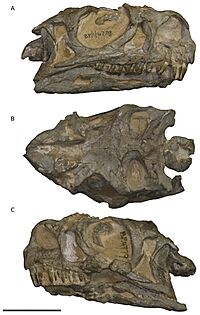 |
|
| Nigersaurus | 1999 | Elrhaz Formation (Early Cretaceous, Aptian to Albian) | All its teeth were at the front of its wide jaws, perfect for eating low-growing plants. | 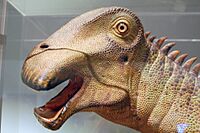 |
|
| Nqwebasaurus | 2000 | Kirkwood Formation (Early Cretaceous, Berriasian) | This was the first non-flying coelurosaur (a group of meat-eating dinosaurs) found in mainland Africa. | 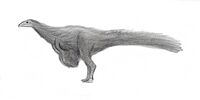 |
|
| Orosaurus | 1867 | Elliot Formation? (Late Triassic to Early Jurassic, Norian to Hettangian) | It's probably the same as Euskelosaurus. | ||
| Ostafrikasaurus | 2012 | Tendaguru Formation (Late Jurassic, Tithonian) | Described from a single tooth, it was thought to be an early spinosaurid, but it might be a ceratosaurid. |  |
|
| Ouranosaurus | 1976 | Elrhaz Formation (Early Cretaceous, Aptian to Albian) | It had long spines on its backbones, which might have supported a sail or hump. |  |
|
| Paralititan | 2001 | Bahariya Formation (Late Cretaceous, Cenomanian to Turonian) | It would have lived in a muddy, coastal area with mangrove trees. | 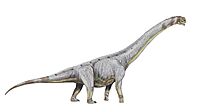 |
|
| Paranthodon | 1929 | Kirkwood Formation (Early Cretaceous, Berriasian to Valanginian) | Even though we only have fragments, they show it was a stegosaur. | 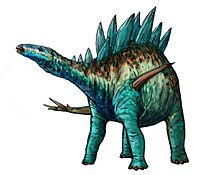 |
|
| Pegomastax | 2012 | Elliot Formation (Early Jurassic, Sinemurian) | Its jaws and beak suggest it ate tough plants. | 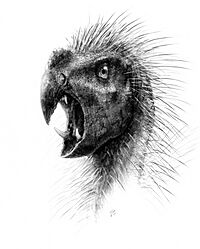 |
|
| Plateosauravus | 1932 | Elliot Formation (Late Triassic, Norian) | We have many fossils, including those of young dinosaurs. | 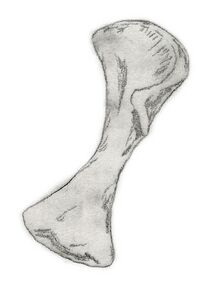 |
|
| Pulanesaura | 2015 | Elliot Formation (Early Jurassic, Hettangian to Sinemurian) | It ate low-growing plants and didn't have the super long neck of later sauropods. |  |
|
| Rebbachisaurus | 1954 | Kem Kem Group (Late Cretaceous, Cenomanian) | It had a row of long spines on its backbones, which would have supported a ridge or low sail. |  |
|
| Rugops | 2004 | Echkar Formation (Late Cretaceous, Cenomanian) | Its skull had two rows of holes on top, which might have held a display structure or armor. |  |
|
| Rukwatitan | 2014 | Galula Formation (Late Cretaceous, Campanian to Maastrichtian) | This is one of the few titanosaurs from central Africa, helping us understand their history. |  |
|
| Sauroniops | 2012 | Kem Kem Group (Late Cretaceous, Cenomanian) | We only know it from a single, thick forehead bone. Some thought it was Carcharodontosaurus, but this was proven wrong. |  |
|
| Sefapanosaurus | 2015 | Elliot Formation (Early Jurassic, Hettangian) | It had a unique cross-shaped ankle bone. | ||
| Shingopana | 2017 | Galula Formation (Late Cretaceous, Campanian to Maastrichtian) | It is most closely related to titanosaurs found in South America. | ||
| Spicomellus | 2021 | El Mers Group (Middle Jurassic, Bathonian to Callovian) | This is the oldest ankylosaur known and the first from Africa. Its armor plates were uniquely fused directly to its ribs. | 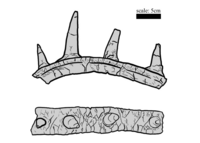 |
|
| Spinophorosaurus | 2009 | Irhazer Shale (Middle Jurassic, Bathonian) | It was first thought to have a "thagomizer" (tail spikes like a stegosaur), but these were actually misidentified collarbones. It ate high-growing plants. | 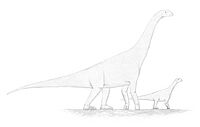 |
|
| Spinosaurus | 1915 | Bahariya Formation, Chenini Formation, Kem Kem Group (Late Cretaceous, Cenomanian to Turonian) | This dinosaur had many features suggesting it lived partly in water, like webbed feet and a paddle-like tail. Scientists still debate if it mainly ate fish or was a general hunter near the shore. | 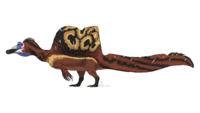 |
|
| Spinostropheus | 2004 | Tiourarén Formation (Middle Jurassic to Late Jurassic, Bathonian to Oxfordian) | It's often considered related to Elaphrosaurus, but this is based on a fossil that might not belong to this type. |  |
|
| Suchomimus | 1998 | Elrhaz Formation (Early Cretaceous, Barremian to Albian) | It was similar to Baryonyx but had a low sail on its back. |  |
|
| Tataouinea | 2013 | Aïn el Guettar Formation (Early Cretaceous, Albian) | Its bones had many air sacs, supporting the idea that sauropods had bird-like breathing systems. | ||
| Tazoudasaurus | 2004 | Azilal Formation (Early Jurassic, Toarcian) | This is one of the few Early Jurassic sauropods known from fairly complete fossils. |  |
|
| Tendaguria | 2000 | Tendaguru Formation (Late Jurassic, Tithonian) | This was the first definite turiasaur found in Africa. |  |
|
| Tornieria | 1911 | Tendaguru Formation (Late Jurassic, Kimmeridgian to Tithonian) | It has been placed in different dinosaur groups over time. | 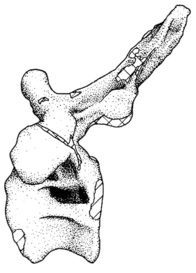 |
|
| Veterupristisaurus | 2011 | Tendaguru Formation (Late Jurassic, Kimmeridgian to Tithonian) | We know it from a few backbones that are somewhat like those of Acrocanthosaurus. | 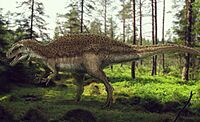 |
|
| Vulcanodon | 1972 | Forest Sandstone (Early Jurassic, Sinemurian to Toarcian) | Teeth from meat-eating dinosaurs were found near its main fossil. |  |
|
| Wamweracaudia | 2019 | Tendaguru Formation (Late Jurassic, Tithonian) | This was the first definite mamenchisaurid found outside of Asia. |
Dinosaur Names Still Being Debated
Sometimes, scientists find fossils that are hard to identify. They might be from a known dinosaur, or they might be a new type. Here are some dinosaur names from Africa that scientists are still discussing:
- Aetonyx palustris: This might be the same as Massospondylus.
- Fabrosaurus australis: Some think it's part of a group called fabrosaurids. It might also be the same as Lesothosaurus.
- Gigantoscelus molengraafi: This is probably the same as Euskelosaurus, but it's hard to be sure.
- Gyposaurus: The African type, G. capensis, might be a young sauropodomorph.
- Hortalotarsus skirtopodus: This is a possible synonym of Massospondylus.
- "Likhoelesaurus": It was thought to be a giant early meat-eating dinosaur, but it might actually be a different type of ancient reptile.
- Megapnosaurus: The African type M. rhodesiensis might belong to the genus Coelophysis. Another type, M. kayentakatae, probably needs its own name.
- Nyasasaurus parringtoni: Described in 2013 as the oldest known dinosaur, but both its age and its classification are debated.
- Sigilmassasaurus brevicollis: This spinosaurid lived at the same time as Spinosaurus. Scientists are unsure if it's a separate type or species.
- Torvosaurus: Teeth first called Megalosaurus ingens have been moved to this genus, but not as a separate species.
Timeline
This timeline shows when some of the dinosaurs from the list above lived. Time is measured in millions of years ago (mya) along the bottom.
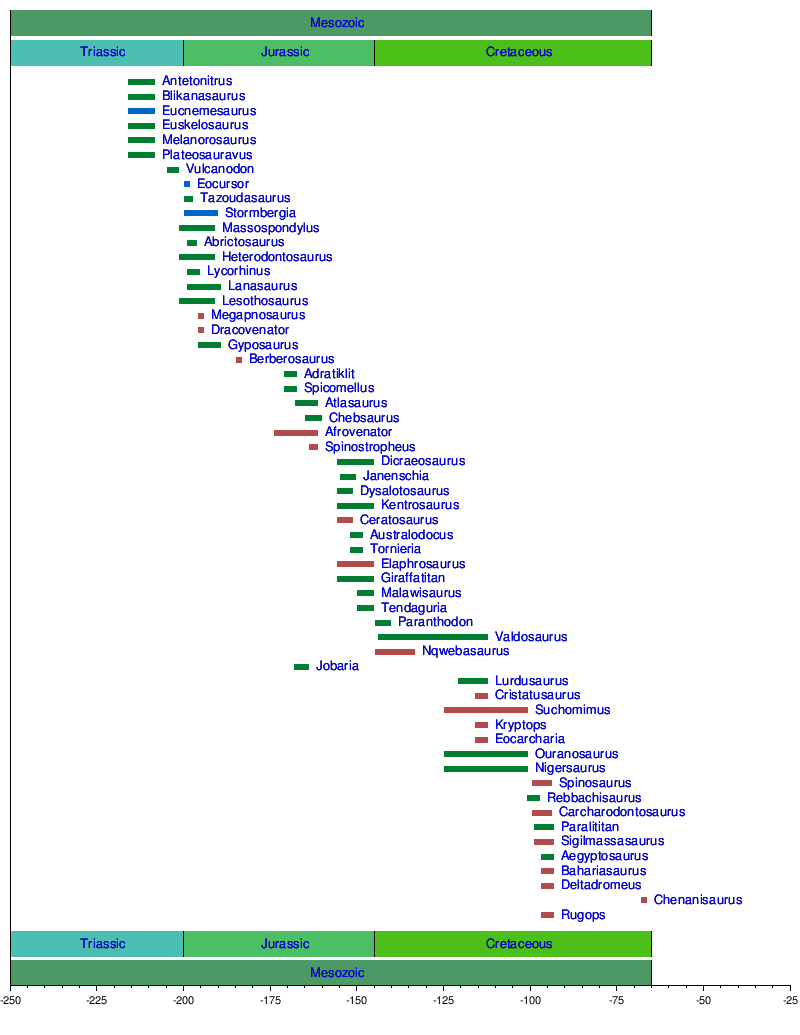
Images for kids
See also
- List of African birds




